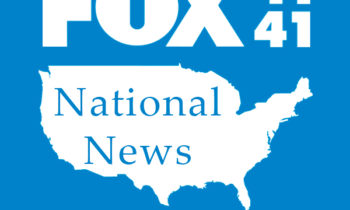
Mortgage rates continued to rise for the week ending April 25. The 30-year fixed-rate mortgage averaged 7.23% APR, up seven basis points from the previous week’s average, according to rates provided to NerdWallet by Zillow. (A basis point is one one-hundredth of a percentage point.)
Rates for 30-year fixed-rate loans have been hovering in the general neighborhood of 7% for the past year-plus, causing considerable pain for home buyers. The rise of mortgage rates in recent years has drawn lots of attention — and ire. As buyers attempt to wrestle their way into affordable homes, it feels like interest rates are definitely the storyline villain. But are rates the actual villain?
Let’s take a little journey back to the last time the U.S. was in a comparable rate environment, roughly winter 2000 to spring 2002. In April 2002, J. Lo is atop the charts. Tiger Woods is becoming the third golfer to win back-to-back Masters tournaments. “The Scorpion King,” starring Dwayne “The Rock” Johnson, is a hit at the box office. And interest rates on 30-year fixed-rate mortgages are at 7%.
Now, here we are, 22 years later. Jennifer Lopez’s latest album came out in February. Tiger’s playing in his 26th Masters. Dwayne Johnson hasn’t been in any movies yet this year, but The Rock did main event WrestleMania. And 30-year fixed rates? Yeah, they’re back at 7%.
With so much that’s oddly the same, let’s talk about why today’s 7% rates hit different. It’s not just because that slang would have been total nonsense to someone in 2002.
Since April’s not over yet, we can’t look at median home prices for the month. But we can look at data for March 2024, which just came out. Last month, the median existing home price was $393,500, according to the National Association of Realtors.
You might want to cover your eyes for this one. In March 2002, the median existing home sale price was $158,200, per the NAR.
OK, you might say, but what about inflation? Well, if we take that March 2002 median price and put it in 2024 dollars, we get $276,347. So it’s not just inflation, or that a dollar doesn’t buy as much as it used to. It’s that housing prices, particularly in the 2020s, have risen much faster than inflation overall.
Let’s look at how those prices would translate to costs at these two different points in time. We’ll assume a 7% mortgage rate, a 10% down payment, and to keep things a bit neater, we’ll set aside additional housing costs like property taxes and insurance and just look at principal and interest. At 2002 prices, monthly principal and interest would be $947. At today’s prices? That’ll be $2,356.
It’s not that the U.S. has never seen 7% mortgage interest rates before. It absolutely has, and it’s seen way worse than that — the all-time high was over 18% in 1981. What’s new is the combination of these interest rates and super-high home prices. With the median home price up 18.9% over the last three years, rates may not be great, but it feels like prices are the actual villain.
What’s a home buyer to do? Possibly look to new construction. While NAR data shows sales of existing homes were down in March, U.S. Census Bureau numbers find that sales of new homes were up. New builds may offer a friendlier environment for buyers. Home builders can offer buyer incentives like rate buydowns — and unlike many home sellers, they aren’t faced with also trying to buy a home in this market.
More From NerdWalletCompare Current Mortgage Rates9 Ways to Deal With High Mortgage RatesHow Much House Can I Afford?
Kate Wood writes for NerdWallet. Email: kwood@nerdwallet.com.
The article Weekly Mortgage Rates Are Up, but Prices Are the Real Villain originally appeared on NerdWallet.



